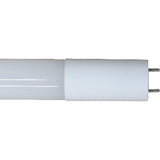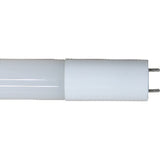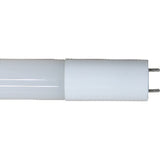Simple Method of Evaluating Illumination of LED Compared to Existing Light Source
Posted by Dave on for ProLampSales
When determining whether or not an LED lamp or LED fixture will provide the equivalent lighting that is provided by traditional light sources such as halogen, fluorescent or metal halide, lumens is one of the numbers you need for your evaluation.
Spec sheets for most light bulbs and light fixtures include a value for lumen output or, simply, lumens.
If the LED lumens are close to the fluorescent lumens, for example, you know that the space will be illuminated at a similar level with either light source. However lumen comparison does not tell the whole story.
Other metrics such as color temperature, color rendering (CRI) and, in the case of spot light applications, center beam candlepower must be included in your analysis because these attributes will affect both the occupant perception of the illumination and the usefulness of it for specific tasks.
Again, most specification sheets will provide these metrics.

Examples
Here are examples of what your lighting comparison worksheet might look like this:
Example One: Office General Overhead Lighting (specs taken from above)
| Lumens | Color Temp | CRI | |
| Existing: 32W T8 Fluorescent | 2950 | 3500K | 86 |
| New: 18W T8 LED | 2500 | 3500K | 80 |
Example Two: Art Gallery Spot Beam Accent Lighting
| CBCP* | Color Temp | CRI | |
| Existing: 50W MR16 12° Beam | 8500cd | 2900K | 100 |
| New: LED MR16 10° Beam | 6000cd | 3000K | 95 |
*CBCP (Center Beam Candlepower), sometimes listed only in candela units 'cd'
Comparing the illumination before and after a change in light source is the most important initial step. In most cases you will probably want to match the existing illumination. However, there may be instances where the space is currently over or under illuminated and the change to LED offers a chance for a remedy. Whatever the objective, a simple table such as those provide above will help for many projects.
For difficult spaces or complex lighting applications, a lighting designer will use software and photometric data from the product manufacturers to develop a concise comparative analysis of different light sources. This approach will give the building owner / operator the most accurate lighting analysis. But for many projects without the budget for a lighting designer, using the simple tables shown above, will offer enough lighting information to know if the change will maintain or improve on the existing lighting.
Of course, the effectiveness of the lighting is only part of evaluation. The final decision whether or not to change to LED will include other important factors such as initial installation cost, lamp life and maintenance cost comparisons.
Conversion Factors
To determine the existing lumens for a space, you need a light meter.
Most light meters designed to measure the light level in a space, use units of lux and/or footcandles. Lux and footcandles measure light output over a given area.
1 lux = 1 lumen/m2
1 footcandle = 1 lumen/ft2
- Posted in LED
Featured Products (View All)
0 Comments




